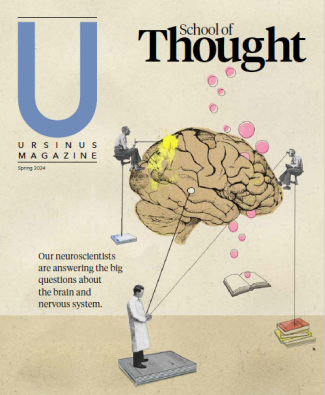
The Burning Question
by: Hugh Clark
Professor of History and East Asian Studies
Recently I supervised the independent study of Shou-li Tung ’16 (a biology major and Chinese minor) that focused on China’s One-Child Policy. Much of what follows is due to her diligent efforts. The One-Child Policy, first adopted in the 1980s, restricted urban couples to having a single child.
China faced a crisis of over-population. At the time of the Revolution in 1949, China’s population was an estimated 550 million. Through the decades that followed, official policy encouraged population expansion. Total population topped 1 billion for the first time in the early 1980s.
The government recognized the looming crisis and began a campaign to reverse the trend. It is estimated that in 2000 the population was as much as 200 million below what it might have been without the policy. Today, although growth rates are much slower than in past years, the population has reached an estimated 1.37 billion and is expected to peak at about 1.4 billion before beginning to decline in the second half of the current century. In October 2015, the government formally relaxed the policy. Couples will be permitted a second child under certain circumstances.
What prompted the change?
The implications of unchecked population growth were real, but so are the looming costs of the policy. One side effect that has caused considerable unease outside China is the frequent resort to involuntary abortion; horrific tales of women who were forced to abort pregnancies even in the third trimester, are recurrent.
Domestic social issues, however, drove the revision. It is estimated that in 2011, approximately 10 percent of the population was 65 and older, and that the percentage will reach 12 percent by the end of this decade. Although lower than in the West — in the U.S. today the figure is approximately 14 percent — it will be approximately three times the percentage of 30 years ago in a culture that has limited resources to devote to social services and is expected to continue to expand. The burden of supporting this aging population is incalculable.
A second concern is gender ratios. The Chinese have long valued males. Skewed ratios in historical data as families resorted to female infanticide rather than bear the cost of raising girls are common. Under the One-Child Policy, parents, who still see security in sons and cost in daughters, have selectively aborted females. According to 2011 estimates there are about 35 million more males than females in China, with the most skewed age groups those born in the last 20 years.
China’s demographic crisis is not past. The heavy financial burden of supporting senior citizens and the social dangers of gender imbalance remain; indeed, both will grow worse in the years ahead. Moreover, a Malthusian crisis still looms. At the very time when the demand for food and water is at its peak, access to both is declining. Great rivers such as the Yellow River hardly reach the sea, its water used to meet the demands of the people and irrigation. Mismanaged land has turned saline and unproductive. Pollution fouls the air and shortens lives — a child raised in Beijing is likely to lose as much as five years of life!
Is it possible to say if the revision is a wise move? There is no right answer. It is clear that four decades ago the Chinese embarked on an unprecedented social experiment and now must wrestle with its consequences. It is equally clear, given China’s pivotal role in our world today, that the world can ill afford them to make the wrong choice.


